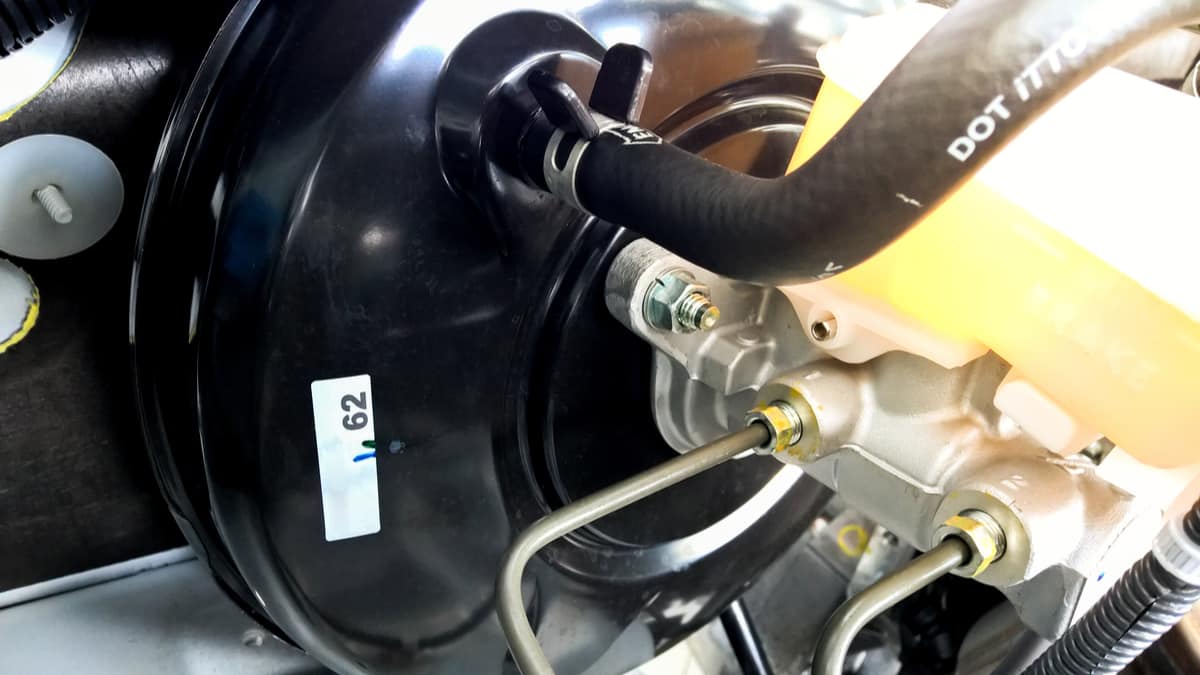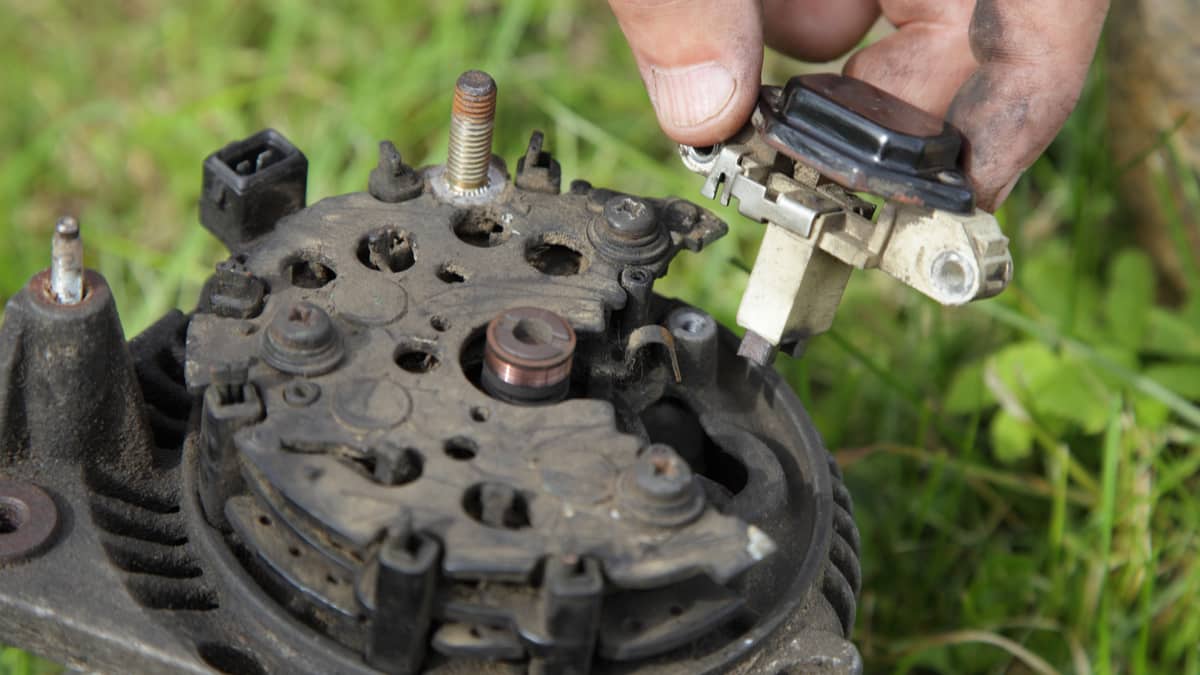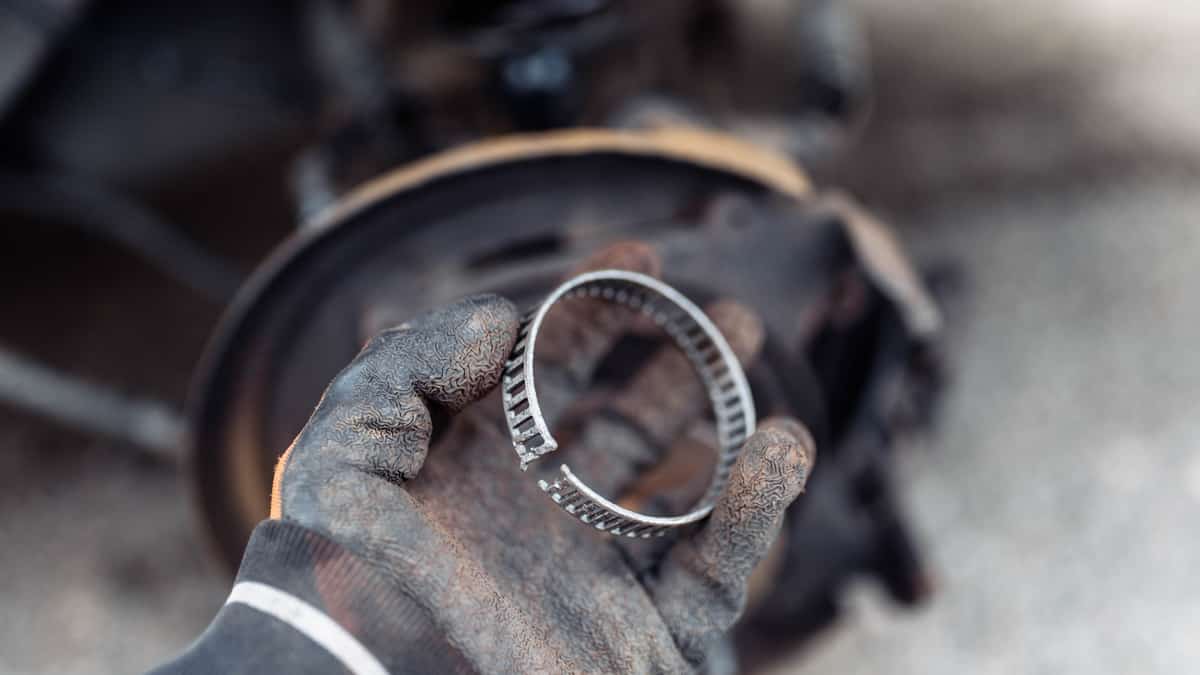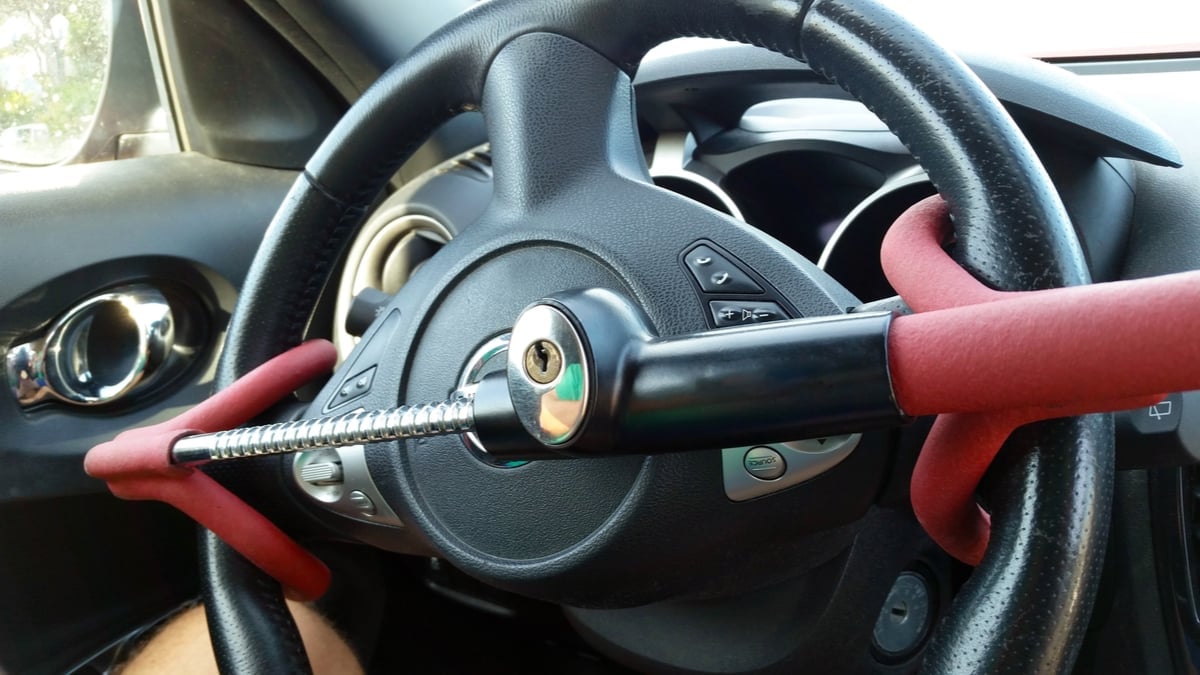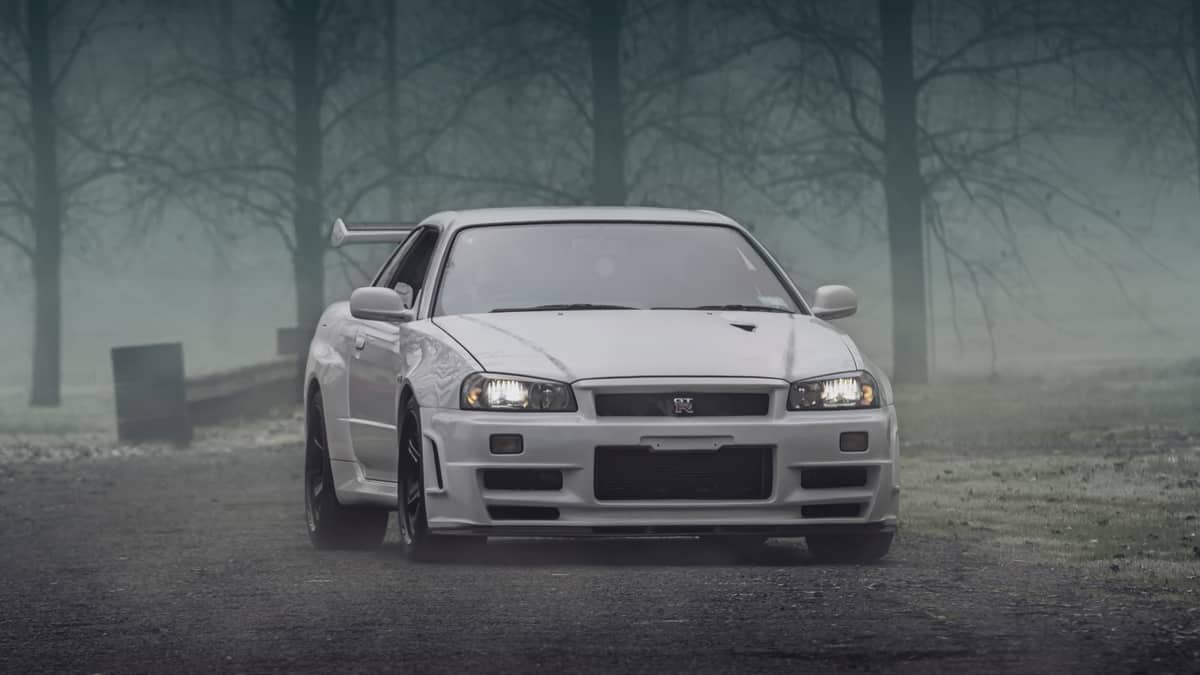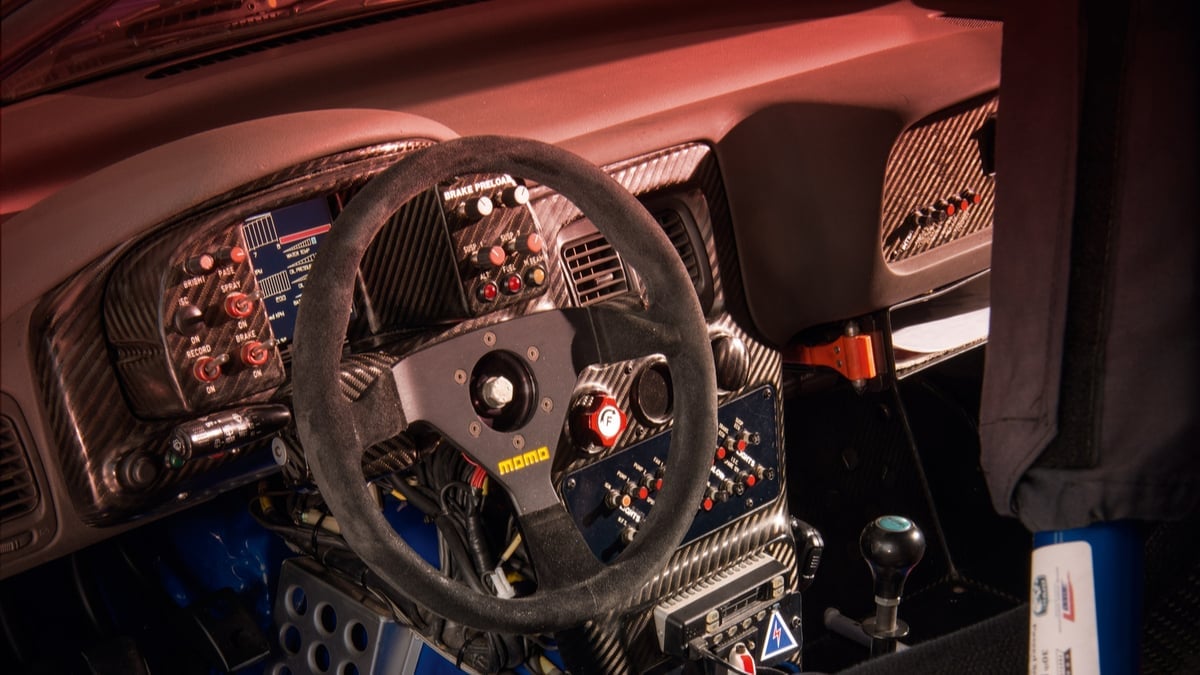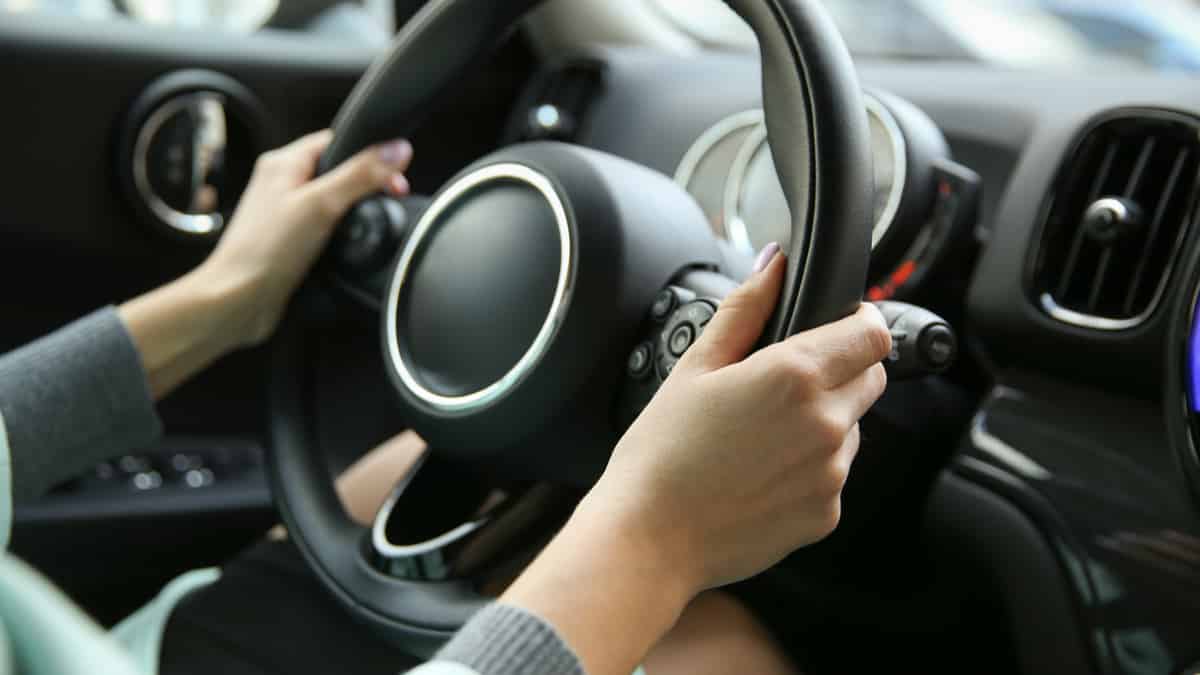As you turn around the corner, the last thing you plan on hearing is some popping. Any noises when driving can be a sign of something that’s seriously wrong. If you hear a popping noise when turning, it’s best to figure out the underlying issues before further damage occurs.
In this guide, we cover the reasons to hear a popping noise through a turn. Once you know what’s causing it, you’ll also be able to fix it. At the end of this article, we try to answer your top questions as well.
Causes of a Popping Noise When Turning
The most common reasons for a popping noise when turning are a broken coil spring, a bad strut mount, defective struts, or a bad ball joint. It could also be worn control arm bushings or bad CV joints, all of which can be repaired.
Here is a more detailed list of the most common causes of a popping noise when turning:
1. Broken Coil Spring
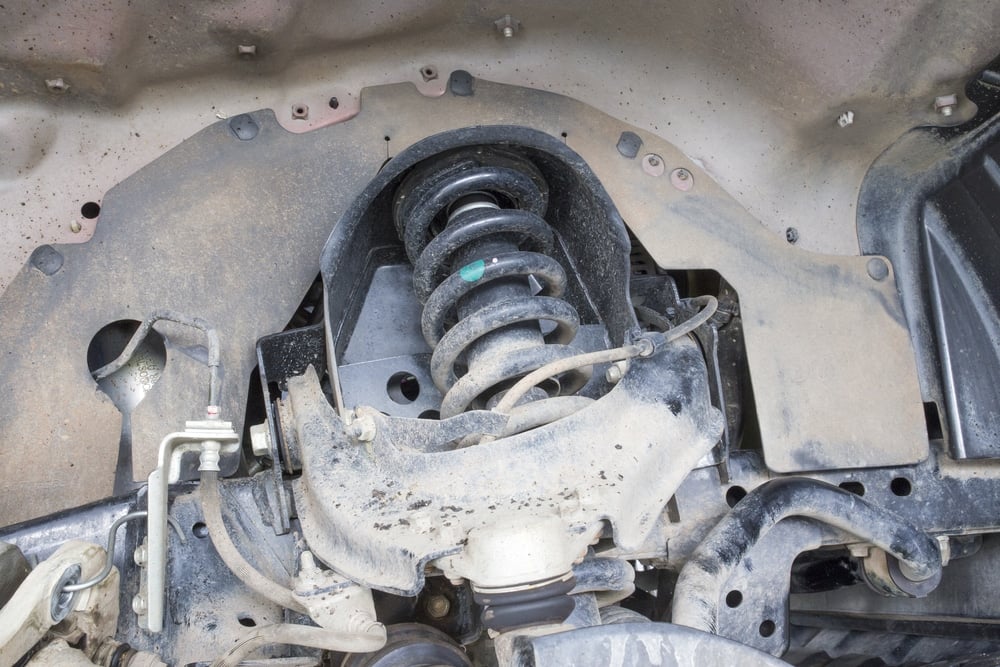
The coil spring is a vital component of the car suspension. Most cars are equipped with these springs. Coils can last for the lifetime of your vehicle but are also prone to damage, especially if you drive on rough roads.
When the coil spring breaks, you’ll hear a popping sound, as well as knocking or clunking. It can also lead to misalignment, causing trouble controlling the vehicle while driving. If left unchecked, the bad springs will further cause tire tread damage. Because you don’t want to replace tires too, it’s best to have this problem resolved as soon as you can.
2. Bad Strut Mount

If your vehicle has a front strut assembly, the mount may have failed. The strut assembly is necessary to dampen the shock from driving on the road. It’s also a pivot point for your car’s steering system.
The mount contains a bearing that provides the pivoting function. If the mount is worn, a popping sound is going to be more pronounced when you are making a turn. A bad strut can also lead to tire wear or steering vibrations.
RELATED: 6 Symptoms Of A Bad Strut Mount (& Replacement Cost)
3. Defective Struts
It’s also possible that the struts have failed. These parts act as the shock absorber in conjunction with the spring coils. Within the strut cylinder, there is gas or liquid, along with a piston.
If the strut goes bad or it gets stuck, the suspension won’t absorb impact the same way. While it won’t cause damage to the vehicle, there will be a strange popping noise heard from the wheels.
4. Worn or Damaged Ball Joint
Ball joints are part of the suspension and steering system. They allow the steering knuckles to pivot while turning because the ball joints are connected to the steering knuckle. Tie rods are also part of this system, responsible for transferring motion from the steering gear to the knuckles.
If either of these parts fails, you may hear a popping noise or clunking. This noise is more pronounced when you are taking a turn or curve.
5. Worn Control Arm Bushings
Control arms connect the suspension to the frame of the vehicle. Attached to the control arms are bushings.
When the bushings fail, you will hear a popping, clicking or snapping when you turn the steering wheel. This noise will eventually get worse, possibly becoming a squeaking sound.
RELATED: 5 Symptoms Of A Bad Control Arm Bushing
6. Bad CV Joints
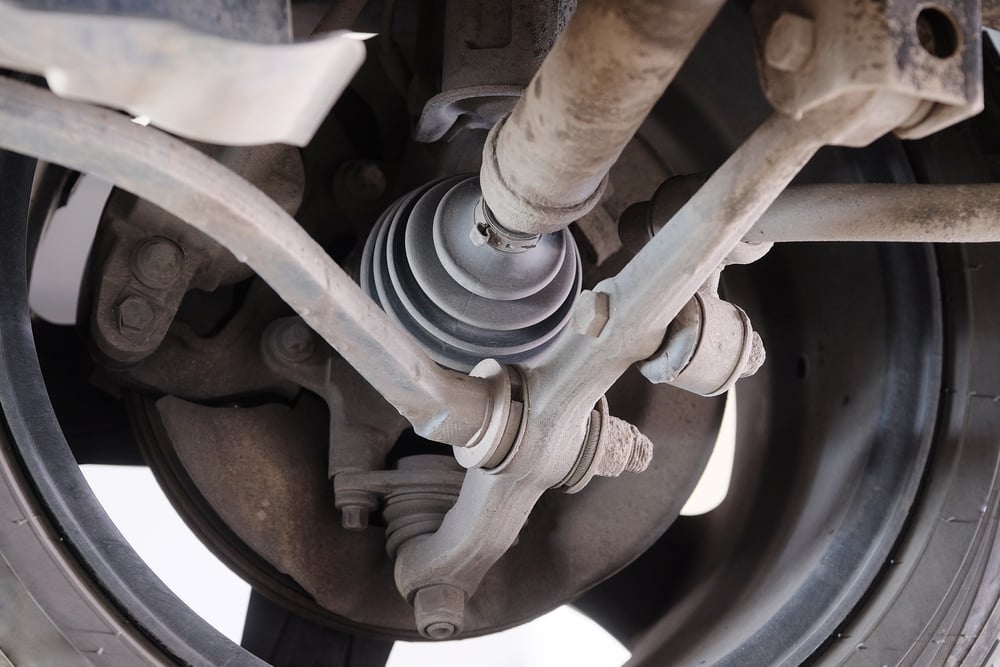
If your vehicle is front-wheel drive, it will have constant velocity (CV) axles. These axles transfer the rotational force from the engine to the front wheels via the transaxle. With every CV axle, there is also an outer and inner CV joint.
These joints are responsible for allowing the axle shaft to move in the up and down motion while traveling over bumps. The outer joints are also needed for pivoting, allowing the front wheels the movement for turning. When the CV joints begin to wear, you are going to hear popping, snapping or clicking noise when turning and accelerating.
RELATED: 5 Symptoms Of A Bad CV Joint
How To Fix a Popping Noise When Turning
Once you can’t take the popping noise anymore, it’s time to fix the problem. To diagnose and repair the issue as a professional, you need to follow the same steps they do. As professional mechanics, we know exactly how to get the car sound-free once again.
Here are some general steps to follow.
1. Determine Which Side It’s Coming From
Before you get started, consider reading the factory service manual for your vehicle. This manual will show you all of the diagrams and parts that you will be inspecting. Any recommended procedures will also be outlined.
To figure out what is going on, you must first determine what side of the car the noise is coming from. If it’s difficult to tell from inside the vehicle, have a friend join you for the ride. Sometimes, it helps to listen from multiple spots in the car while going through turns. The two of you can compare notes and narrow down the location.
2. Inspect Coil Springs and Strut Mount
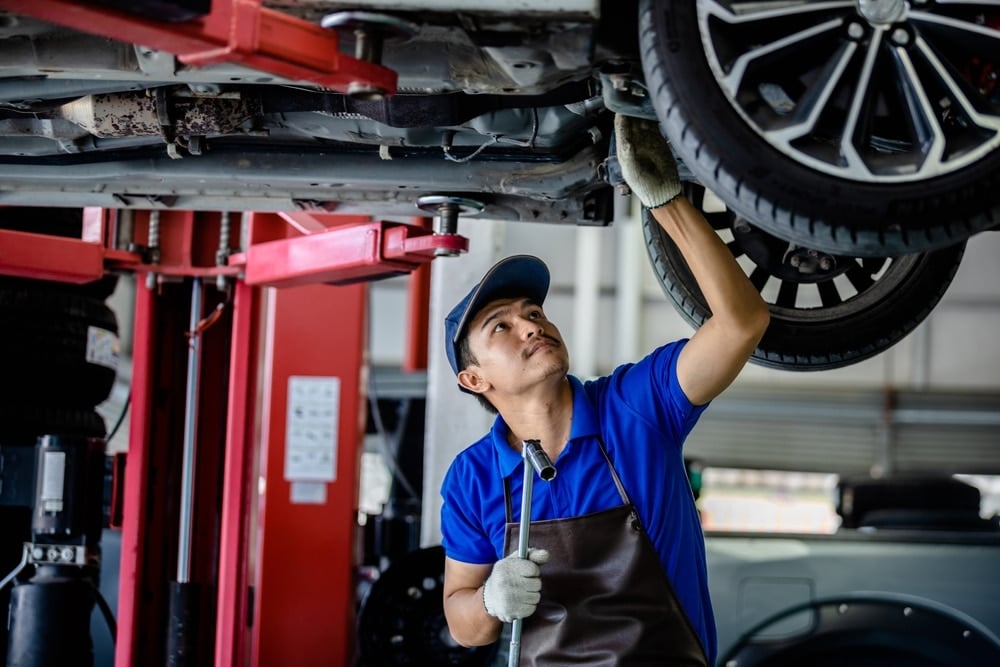
You must perform a visual check on the coil springs and strut mount. Springs are found near the wheel above the axle. If you lift the vehicle, you’ll be able to see broken springs or strut mounts much easier.
However, not all breaks in the spring are easy to notice. If the break occurs in the middle, you may have to do a little more investigation.
3. Inspect Suspension and Bushings
Next, you want to inspect the boots and bushings for any signs of wear. As you examine under the vehicle, work at the wheel where you hear the noise first. If the bushings are separating or the suspension appears worn, you want to prepare for replacement.
Don’t forget to look for excessive play in the tie rod ends. Begin at the power steering box and move from the arms to the wheels. The tie rod ends are the connection point between the wheels and the power steering box. If the bushings are compromised, you need to replace them.
4. Replace Broken Parts
Whatever problem you found through the initial examination should be repaired. In many cases, it’s best to replace suspension parts in pairs. Therefore, if you have a bad coil spring on one side, you may as well replace the other one at the same time. Because the other spring is worn, only installing one can change the ride height and balance of the vehicle.
While you are working on the suspension system, it’s best to replace anything that looks worn. For example, if you are replacing springs because one broke, you may also want to inspect the ball joints, bushings and other vital components in case they need replaced as well. If something looks like it may not last much longer, just go ahead and replace it to be safe.
5. Contact a Professional
If you aren’t sure that you can perform the repair yourself, it’s best to get help from a professional mechanic. If you don’t know how to find a good repair shop, we advise you to talk with family and friends for their recommendations.
According to a report performed by AAA a few years ago, the average mechanic costs between $47 and $215 per hour. This is a small price to pay compared with what you might spend if you try to fix the suspension yourself and mess it up.
What causes a popping noise when turning?
You probably have a part failing on the suspension or steering system. It could be due to a bad ball joint, defective struts, a bad strut mount, a broken coil spring, worn control arm bushings or bad CV joints. You need to inspect the system and replace what’s malfunctioning.
Why is my front end popping?
Suspension problems can lead to a popping noise in the front end, especially if you are going through a turn. The suspension connects to the steering system, so all of these parts need to be inspected to find the root of the issue. Fix whatever is broken as soon as possible to ensure your on-road safety.
Why do I hear a clicking noise when I turn my wheel?
As you turn the steering wheel, you activate numerous steering components and suspension parts. Listen carefully to where the sound is coming from and inspect that side. You’ll probably find a bad ball joint, a defective strut, a broken coil spring, a failing strut mount, bad CV joints or worn control arm bushings.
Do ball joints make noise when turning?
Yes, worn ball joints make a faint clunking or popping noise that can be intermittent at first. You may hear it more as you go through a turn, coming from the offending side of the vehicle. It can also be pronounced when you hit a dip or bump in the road.
Even as professional technicians, it can be difficult to determine where the popping noise is coming from when you are turning. It takes a lot of know-how and inspection to figure out what’s going on at times. For this reason, you may feel better having it looked at by your local repair shop.
Whether you fix it yourself or you take it to a mechanic, it’s best to have the popping noise fixed as soon as possible. Any suspension or steering issue can lead to a loss of control when turning. If the situation is bad, you could end up causing an accident, which you don’t want to do.
RELATED:
- Clunking Noise When Driving Over Bumps – Causes & Fixes
- Car Making A Rattling Noise? Causes & Fixes
- Car Makes Noise When Turning? (9 Causes & How to Fix it)
Categories: Suspension, Troubleshooting



